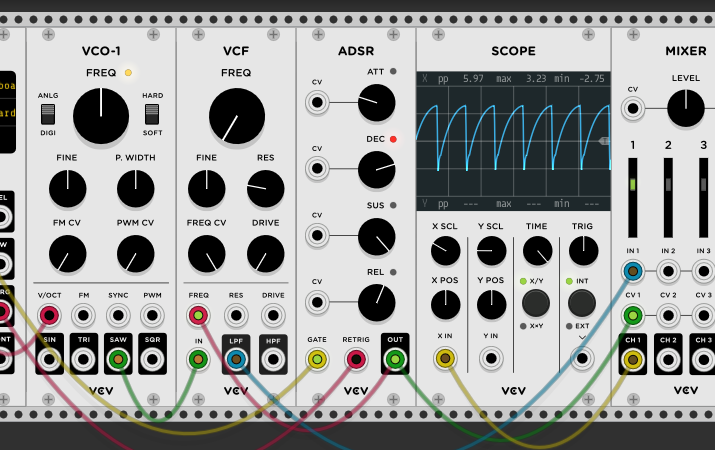Monday, August 6, 2020
Introduction to Modular Synthesis using VCV Rack
As part of the coursework for Teaching as Art, I developed a hands-on workshop on how to use analog synthesizers. No hardware is necessary, just the excellent and open-source VCV Rack!
I've presented the workshop in several venues, including HOPE 2020 and the 2020 Hackaday Remoticon. Here's a nice review of the workshop from there:
The first of the two sessions that I did attend in this slot was Introduction to Modular Synthesis using VCV Rack by Jonathan Foote. VCV Rack is a free, open source Eurorack simulator — meaning that you can get started with modular synthesis without spending hundreds — if not thousands — on gear. I'd actually been lucky enough to attend a talk by Andrew Belt, VCV Rack's creator in the past, but had somehow still not managed to get around to installing it, so was excited to give it a go in this workshop. Foote was a delightful tutor, covering not only how to create all manner of sounds with Rack's complicated interface, but also just enough music theory and physics to understand how these sounds were being created.

Maybe you've seen a modular music synthesizer with its alluring tangle of patchcords, and wondered: how does it work? What do all those knobs do, and how do I get started? This workshop is for you! Using the free and open source VCV Rack digital audio workstation, you will learn the principles of analog audio synthesis and how to create new sounds using voltage controlled oscillators, filters, and amplifiers. No hardware required, but once you understand the principles you will be ready to start using Eurorack or similar modular synthesizers, and a new sonic world will be at your fingertips!
Prerequisites:
Please download and install VCVRack from here: https://vcvrack.com/Rack. Please make sure you can run it and are hearing sound output (press the "Z" key to trigger a note). You may need to click on the "AUDIO-8" module and select your sound output.
This workshop is geared to the total beginner, but any experience with music, MIDI, and/or synthesizers will help.
Part I:
- Basics of voltage control and patching
- Voltage Controlled Oscillator (VCO)
- LFO -- "Rave Hoover"
- Voltage Controlled Filter (VCF)
- Envelope Generator ADSR
- Gate and trigger signals
- Mixer and Voltage Controlled Amplifier (VCA)
-- break --
Part II
- Noise sources
- Drum sounds 1: Kraftwerk noise snare
- Drum sounds 2: Syndrum / 808 kick
- Sequencers: clocks and triggers
- Drum Machine from sequenced sounds